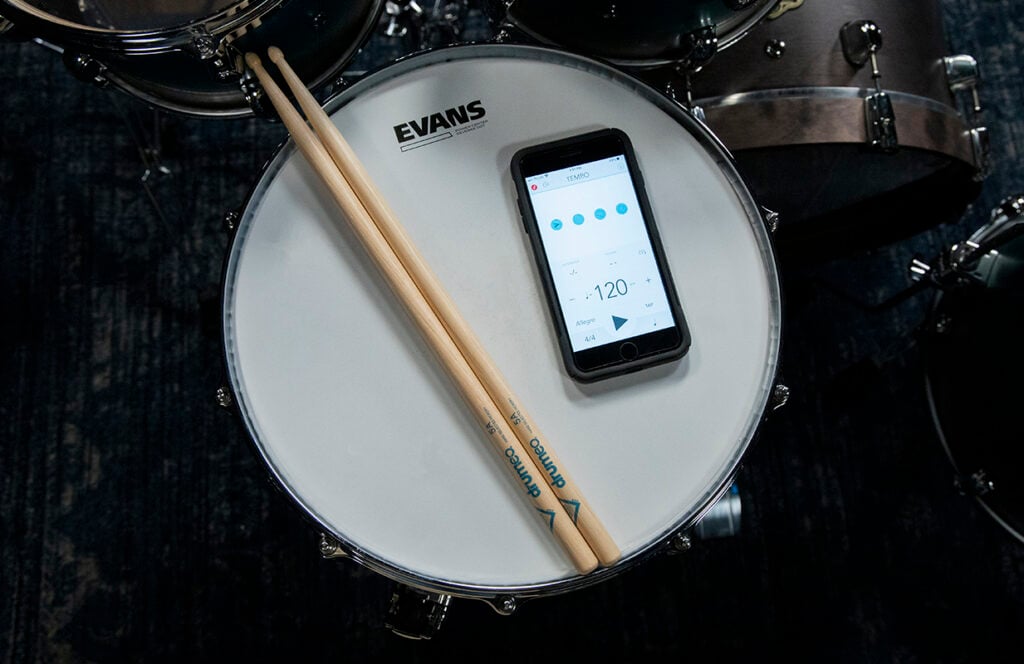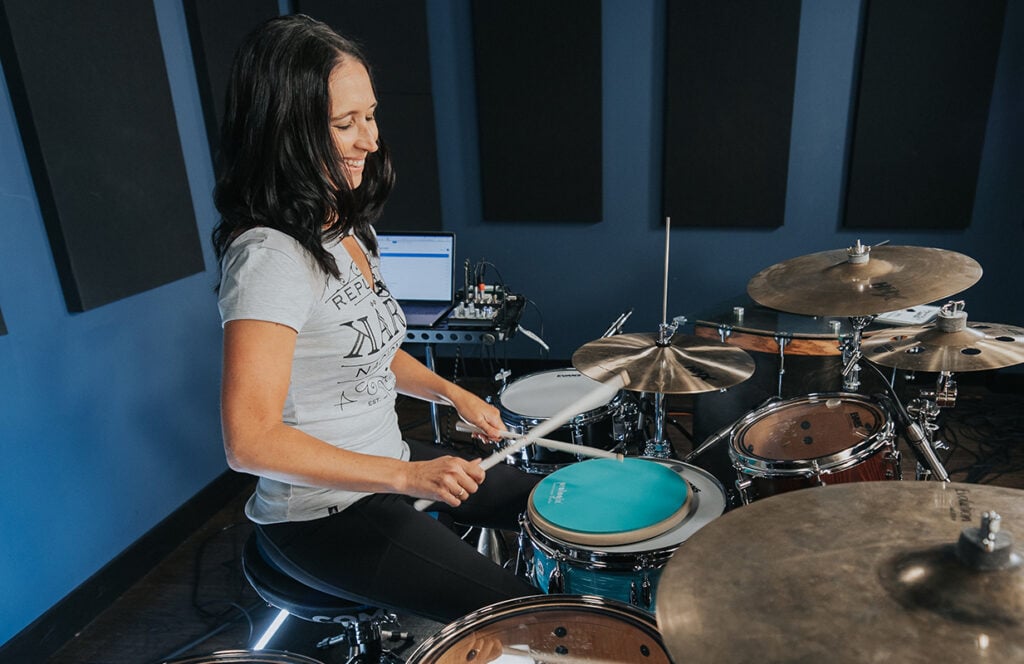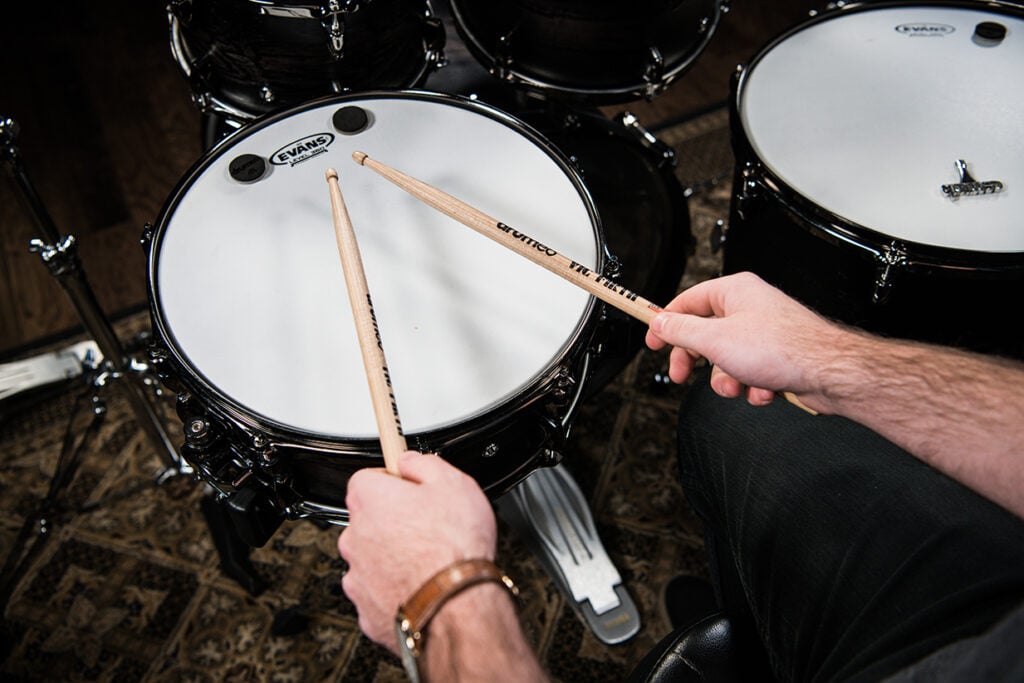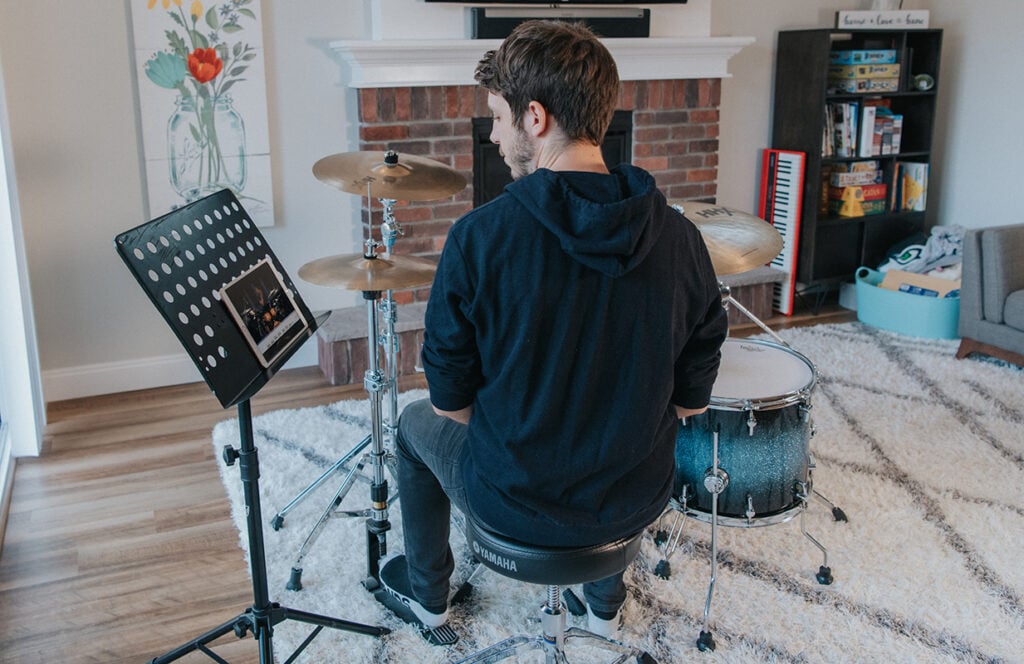The drag paradiddle #2 combines the single paradiddle and the drag in a unique pattern that’s perfect for snare solos and creative fills. Learning this drum rudiment will help you improve your stick control.

Not to be confused with the single dragadiddle, the drag paradiddle #2 (sometimes known as ‘dragadiddle #2’) is the second of two variations on a pattern that’s great for practicing your articulation.
This rudiment builds on the drag paradiddle #1, adding an extra dragged 8th note after the first quarter note.
Here’s what a drag paradiddle #2 sounds like:
You can use this tool to practice along at the tempo that’s best for you (it’s the one Drumeo members use when practicing with the 3000+ play-along tracks inside our members area).
► Click here if you want to learn how to read drum music
While this might sound like something you’d hear marching drummers play on a snare drum, you could try incorporating it into rock fills and solos around the drum kit.
Make sure your paradiddles and drags are tight before you start working on this rudiment. Without the drags, the pattern can be played as an 8th note double stroke and a 16th note paradiddle, so you can pare it down to its foundation if you’re finding this one tricky.
Follow these tips to help you play the drag paradiddle #2 smoothly and consistently.

When you’re first learning how to play something, it’s fine to test it out without a metronome as you get used to the pattern. But you shouldn’t go click-free for long. The metronome will help you develop a better internal clock and show you exactly where the timing of your strokes is inconsistent (or where it’s right on the grid).
You can buy a physical metronome at a music store or download a metronome app online.

While it might be tempting to get up to speed as quickly as possible – especially if you’re feeling confident – make sure each of your drags sounds like two separate notes and that your technique is solid.
Be honest with yourself and don’t increase the tempo until you’ve really got it down. Don’t just say “it’s good enough”. Develop control first, and speed will come later.
Try setting your metronome to 60 BPM, then slowly work your way up 5 BPM at a time.

If you’re a right-handed drummer, you probably default to starting everything with your right hand. Even though the drag paradiddle #2 alternates naturally, make sure you practice starting the whole pattern with your weaker side. This will give you more confidence and control when starting with either hand.

It’s easiest to correct your posture or grip immediately if you’re watching yourself in a mirror. Try to set up a practice pad and a snare stand in front of a full length mirror if you can.
You’ll be able to notice if you’re gripping your sticks too hard, or if your stick height doesn’t look right. Use your reflection as a window into how you’re doing. It’s like becoming your own drum teacher!

While playing in front of a mirror will help you fix issues on the fly, you might not realize during your practice when something is wrong. Sometimes we don’t notice issues while we’re in the middle of playing – especially if we’re concentrating hard.
Whether you’re propping your phone on your dresser or capturing it all with a camera and tripod, it’s helpful to watch your practice sessions and critique yourself from a ‘third party’ perspective.
We’ve put together a playlist with drumless tracks at different tempos so you can practice this rudiment over real music:
Once you’re comfortable playing it on a practice pad, try the drag paradiddle #2 around the drum set. Here are some exercises to get started.
#1:
#2:
#3:
#4:
#5:
Any surface can be part of the pattern!
With enough solid practice, you should start to feel more confident in your playing. If you skipped ahead to the drag paradiddle #2, go back and learn the drag paradiddle #1.
Otherwise, the next rudiment you should learn is the single ratamacue, which uses the same components as drag paradiddles.


By signing up you’ll also receive our ongoing free lessons and special offers. Don’t worry, we value your privacy and you can unsubscribe at any time.
We use cookies for traffic data and advertising. Cookie Policy »